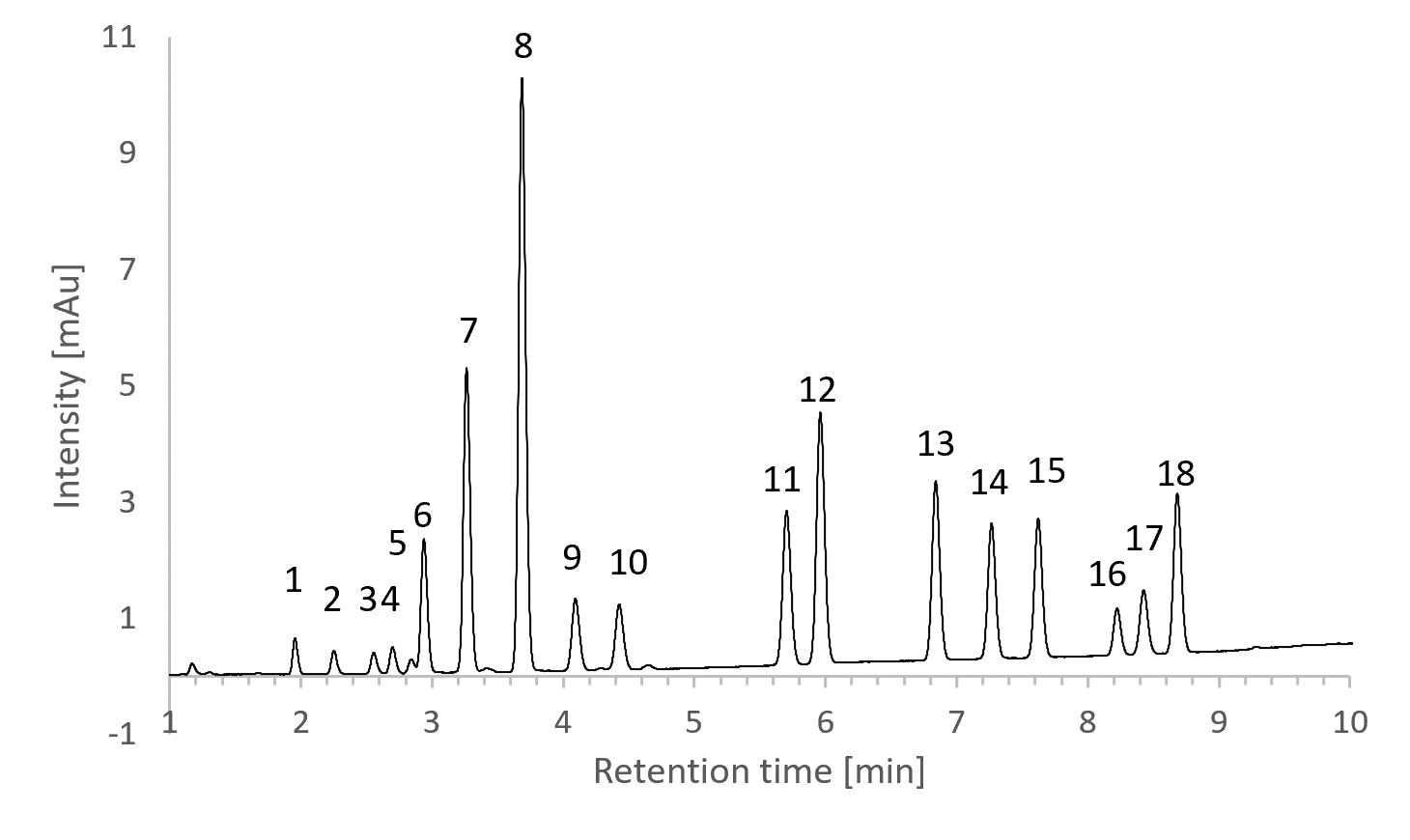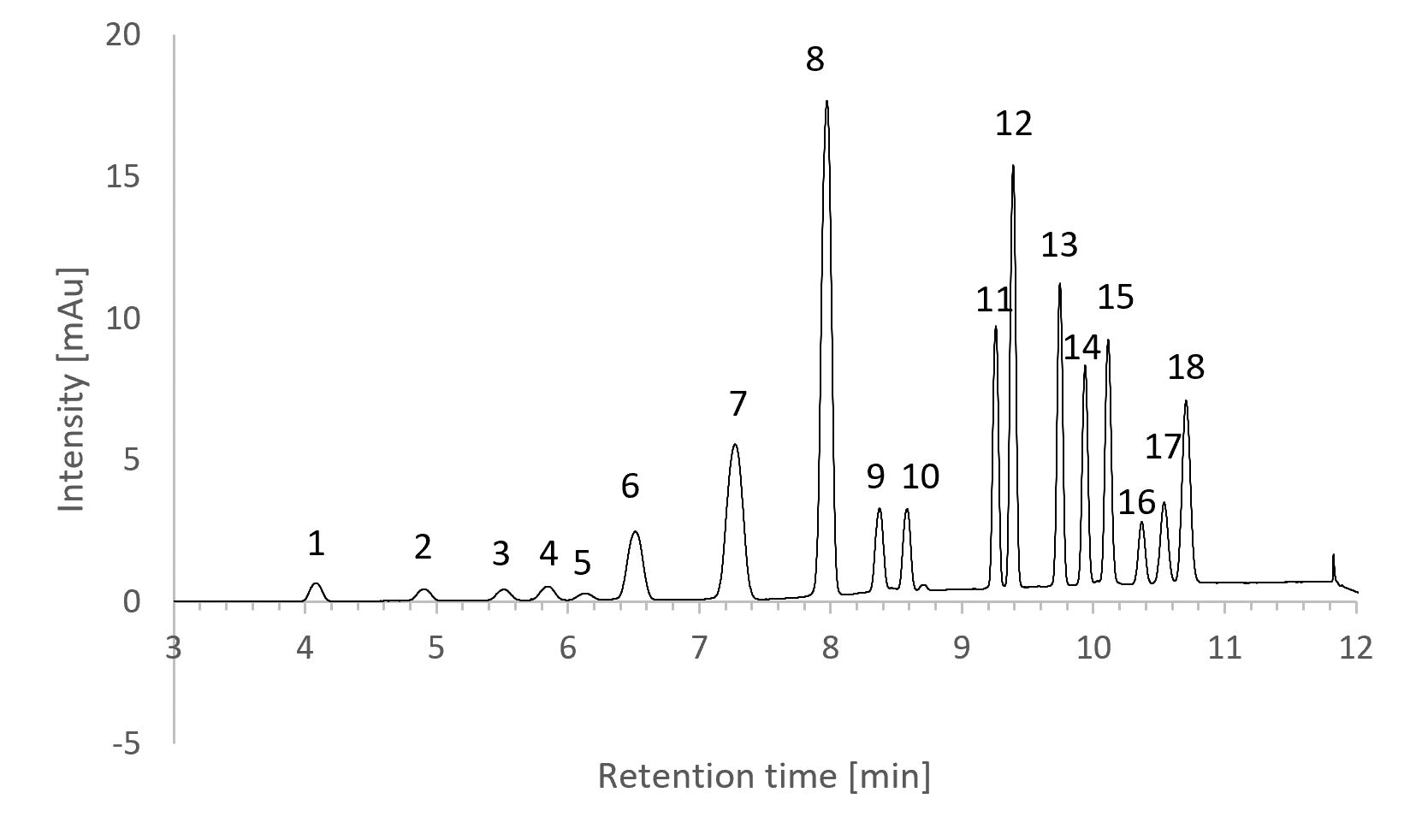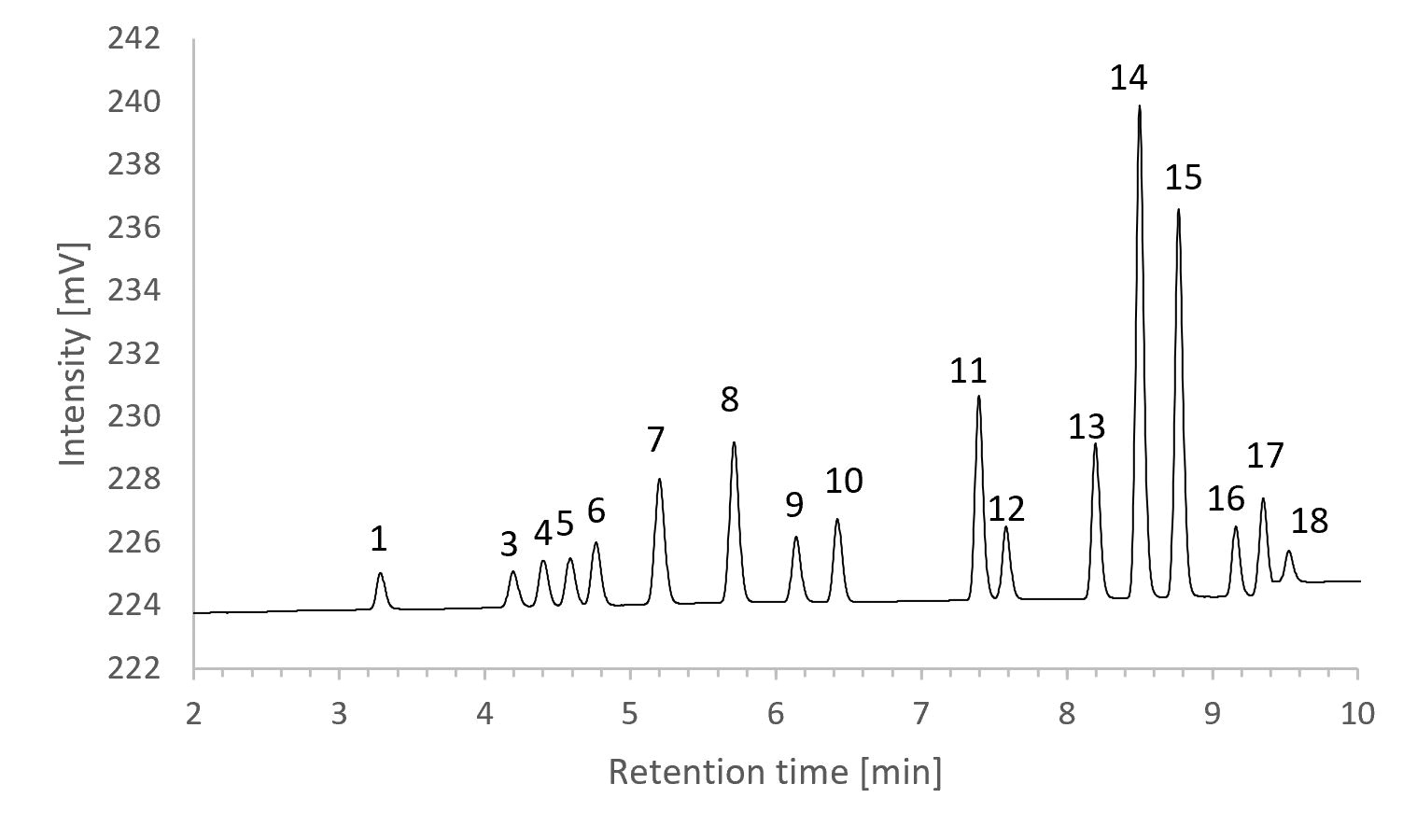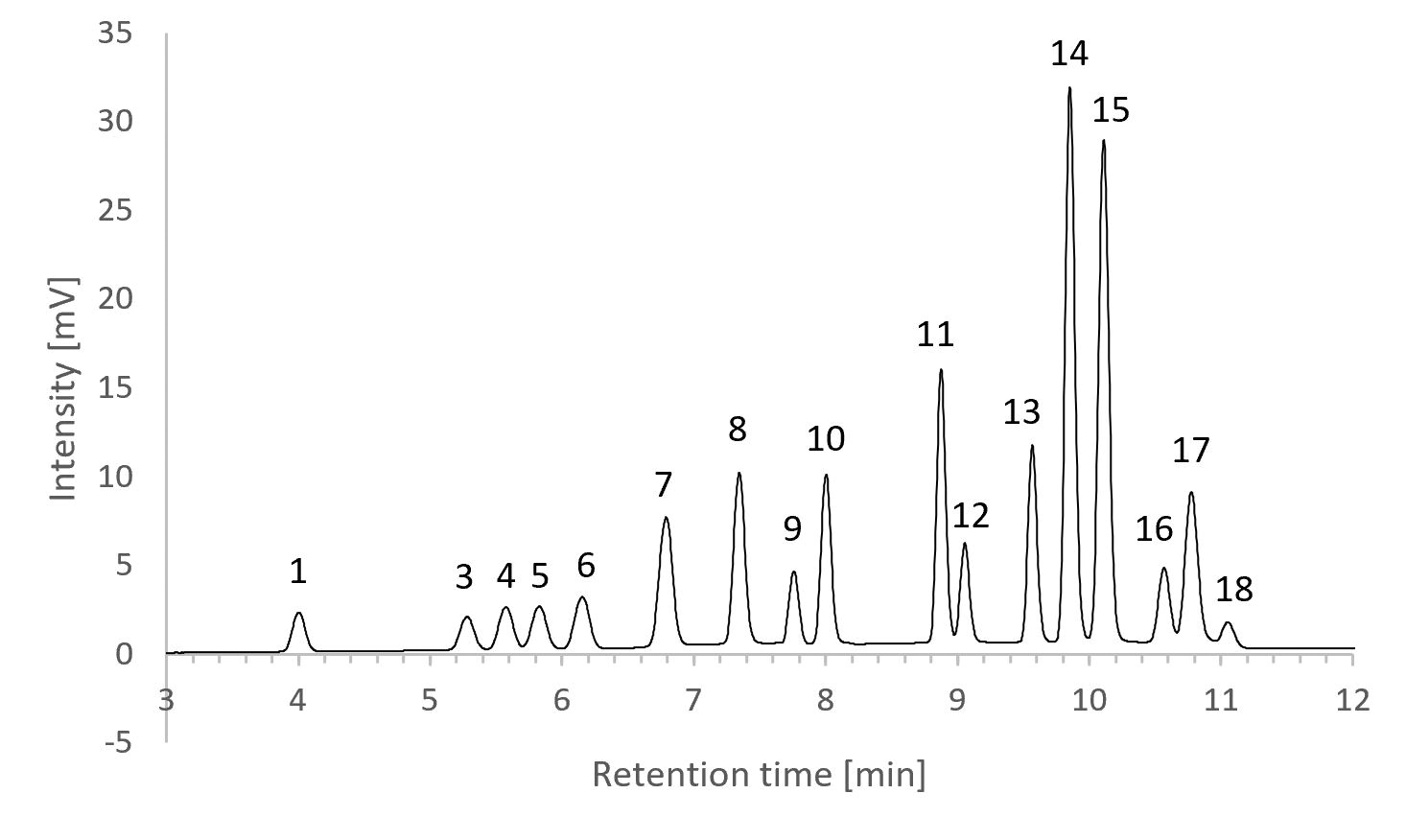Quick Column Analysis for Priority Pollutants
The new Shim-C18-PAH column provides fast and excellent results in PAH analysis

What do rubber ducks, barbecued meat and car tires all have in common? All of them are things we come across on a daily basis and they all may contain polycyclic aromatic hydrocarbons (PAHs). And that involves risks. This is because PAHs are almost impossible to break down in the environment and can be harmful to health where the concentration is too high. For this reason, strict compliance with limit values is particularly important. The new Shim-C18-PAH column enables rapid and precise analysis in finding PAH residues, even at low concentrations.
PAHs pose a risk to human health. Many of them are carcinogenic, alter genetic material and can even have a dangerous effect on fertility. In addition, they are virtually impossible to break down in the environment [1]. The U.S. Environmental Protection Agency (EPA) has classified a total of 16 PAHs as priority pollutants. [2] And this is why PAH analyses are of immense importance.
Because of this importance, the Shim-C18-PAH column – a recent addition to the Shimadzu LC column portfolio – has been especially designed to rapidly and reliably measure polycyclic aromatic hydrocarbons (PAH).
Exposure is unavoidable
Hazardous PAHs are found practically everywhere. They are produced during any combustion process – mainly in industry, but also in such cases as campfires, open hearths and cigarette smoke – and can therefore be consumed through ordinary respiration. But that’s not all: PAHs also enter the water and soil, where they continue to disperse. In everyday life, we consume them when eating smoked and barbecued foods. What’s more, PAHs are often found in rubber and plastic or refinery products, such as car tires, roofing felt, road surfacing, and even children’s toys like rubber ducks. [1] Since we can scarcely escape exposure, PAH analysis is critical in controlling the amount of environmental exposure to PAHs.
Useful for analysis: special PAH columns
The Shim-C18-PAH column is specifically designed for demanding PAH analysis and therefore offers several advantages over conventional C18 columns, such as the previously recommended Shim-pack GIS C18-P. That column also gives good results, but the GIS C18-P at 500 bar is not as pressure-stable as the Shim-C18-PAH (600 bar). It therefore offers fewer options for analysis, as well as longer analysis time for PAHs.
Shim-C18-PAH enables faster analysis while maintaining a very good resolution. In a nutshell, it saves time. This is an important factor, especially for users performing routine PAH analyses.

The combination of the UFLC-Nexera-X3 system used and the high-quality Shim-C18-PAH together with the best detection characteristics of the fluorescence detector gives Shimadzu a competitive advantage in this segment and provides users with a complete, high-quality PAH package. Our solution for PAH analysis enables one of the fastest PAH analyses with the highest resolution and sensitivity on the market.
Shim-C18-PAH specifications
The US Pharmacopeia (USP) code 118 refers to “aqueous polymerized C₁₈ groups on silica gel particles, 1.2 to 5 µm in diameter”. Since C18 groups are polymerized, the individual C18 chains are closer together. This allows planar and non-planar structures to be better separated. In this way, the column is characterized by increased steric selectivity. This is an advantage in PAH analysis, since the substances exhibit differences in planarity.
|
Phase |
C18, octadecylsilane (ODS), modified |
|
USP code |
L 118 |
|
Particle size |
3 µm |
|
Recommended applications |
PAHs (EPA) and EU-Regulation (EC) No 1881/2006 |
|
Bound phase |
C18 (modified) |
|
Surface |
340 m2/g |
|
Carbon content |
proprietary |
|
Endcapping |
yes |
|
pH range |
2.0-8.0 |
|
Pore size |
11 nm |
|
Max. temperature |
60 °C (phosphate buffer: 40 °C) |
|
Max. pressure |
600 bar |
How the Shim-C18-PAH performs in a quality test
To demonstrate the separation qualities of the Shim-C18-PAH, a standard PAH mixture was selected using the 16 PAHs classified as “primary pollutants” with 2 additional critical PAHs (Fig. 1). The analysis of these 18 PAHs on the Shim-C18-PAH was carried out with two different column dimensions using a Shimadzu LC-40-X3 system.
The concentration of all PAHs in the samples detected by the photodiode array (PDA) detector was 2 µg/ml and that of PAHs in the sample for fluorescence detection was 10 µg/l. The analytical conditions, system parameters, and gradient for the analyses with the PDA are shown in Table 3. Table 4 shows the gradient and parameters for the measurements with the fluorescence detector (Ex: excitation wavelength, Em: emission wavelength).
|
P/N |
Description |
Particle size |
Length |
I.D. |
|
961-18002 |
Shim-C18-PAH |
3 µm |
100 mm |
4.0 mm |
|
961-18001 |
Shim-C18-PAH |
3 µm |
150 mm |
2.0 mm |
Measurement parameters and methods
| Columns: | Shim-C18-PAH (3 µm; 150 mm x 2.0 mm I.D.) Shim-C18-PAH (3 µm; 100 mm x 4.0 mm I.D.) |
| Mobile phase: | Water and Acetonitrile (ACN) |
| Oven temperature: | 40 °C |
| Injection volume: | 1 µL |
| Detection: | PDA (254 nm) and fluorescence |
|
Shim-C18-PAH 100 mm x 4.0 mm I.D., 3 µm; P/N 961-18002 |
Shim-C18-PAH 150 mm x 2.0 mm I.D., 3 µm; P/N 961-18001 |
||
|
Flow rate: 2.0 ml/min |
Flow rate: 0.8 ml/min |
||
|
Gradient (for PDA analysis): |
Gradient (for fluorescence analysis): |
||
|
Time [min] |
% ACN |
Time [min] |
% ACN |
|
0.0 |
50 |
0.0 |
40 |
|
5.0 |
70 |
1.0 |
40 |
|
9.5 |
100 |
7.0 |
55 |
|
9.9 |
100 |
9.5 |
100 |
|
10.9 |
50 |
11.0 |
100 |
|
12.0 |
40 |
||
|
Shim-C18-PAH; 100 x 4.0 mm, 3 µm |
Shim-C18-PAH; 150 x 2.0 mm, 3 µm |
||
|
Time [min] |
% ACN |
Time [min] |
% ACN |
|
0.0 |
40 |
0.0 |
40 |
|
5.0 |
60 |
1.0 |
40 |
|
9.50 |
100 |
6.0 |
55 |
|
9.90 |
100 |
9.0 |
90 |
|
10.90 |
40 |
12.0 |
100 |
|
13.0 |
100 |
||
|
13.01 |
40 |
||
|
Time [min] |
Wave length [nm] |
Time [min] |
Wave length [nm] |
|
0.01 |
Ex: 260 Em: 350 |
0.01 |
Ex: 260 Em: 350 |
|
5.50 |
Ex: 260 Em: 420 |
7.07 |
Ex: 260 Em: 420 |
|
5.90 |
Ex: 285 Em: 440 |
7.62 |
Ex: 285 Em: 440 |
|
6.30 |
Ex: 260 Em: 420 |
7.84 |
Ex: 260 Em: 420 |
|
9.40 |
Ex: 305 Em: 495 |
10.92 |
Ex: 305 Em: 495 |
Short analysis times
The results using PDA detection for both column dimensions are shown in Figures 3 and 4. The chromatogram with the column dimension 3 µm; 100 x 4.0 mm shows an analysis time of about 10 minutes (Fig. 3). All peaks are separated from each other with good resolution. The analysis time for the column size 3 µm; 150 x 2.0 mm is also short, about 12 minutes (Fig. 4).
PAHs were also measured by fluorescence detection, as this is much more sensitive than detection with PDA. The samples used for this measurement had a concentration of 10 ppb. This low concentration is important for many PAH analysis guidelines and regulations. The results are shown in Figures 5 and 6, and the gradient and changing excitation and emission wavelengths are listed in Table 4.
Analysis with the 100 x 4.0 mm ID column ends after approximately 10 minutes (Figure 5) and analysis with the 150 x 2.0 mm ID column has an analysis time of approximately 12 minutes (Figure 6). Both chromatograms with fluorescence detection show well-separated peaks with a very high intensity for the 10-ppb sample, especially compared to the PDA results. The wavelengths provided in Table 4 were adjusted to the PAHs to obtain better sensitivity for fluorescence detection. Acenaphthylene (peak 2) is not fluorescent, meaning it is not visible in the results with fluorescence detection.
Conclusion
The Shim-C18-PAH columns demonstrate excellent performance for PAH analysis both with PDA and fluorescence detection when using different column dimensions. In the performance test described, analysis times were short and all 18 PAHs were well separated. In addition, high sensitivity was achieved with fluorescence detection, as all PAHs could be analyzed in a concentration range of 10 ppb.
References
- Federal Environment Agency: PAH – Harmful to the environment! Toxic! Inevitable? January 2016
- Appendix A to 40 CFR, Part 423-126: Priority Pollutant List 2014 (EPA)
- EU commission regulation No 1881/2006; last addition: commission regulation No 2020/1255




